
Automation describes a wide range of technologies that reduce human intervention in processes, mainly by predetermining decision criteria, subprocess relationships, and related actions, as well as embodying those predeterminations in machines. Automation has been achieved by various means including mechanical, hydraulic, pneumatic, electrical, electronic devices, and computers, usually in combination. Complicated systems, such as modern factories, airplanes, and ships typically use combinations of all of these techniques. The benefit of automation includes labor savings, reducing waste, savings in electricity costs, savings in material costs, and improvements to quality, accuracy, and precision.

SimEarth: The Living Planet is a life simulation game, the second designed by Will Wright. and published in 1990 by Maxis. In SimEarth, the player controls the development of a planet. English scientist James Lovelock served as an advisor and his Gaia hypothesis of planet evolution was incorporated into the game. Versions were made for the Macintosh, Atari ST, Amiga, IBM PC, Super Nintendo Entertainment System, Sega CD, and TurboGrafx-16. It was re-released for the Wii Virtual Console. In 1996, several of Maxis' simulation games were re-released under the Maxis Collector Series with greater compatibility with Windows 95 and differing box art, including the addition of Classics beneath the title. SimEarth was re-released in 1997 under the Classics label.

A thermostat is a regulating device component which senses the temperature of a physical system and performs actions so that the system's temperature is maintained near a desired setpoint.
The Plessey Company plc was a British electronics, defence and telecommunications company. It originated in 1917, growing and diversifying into electronics. It expanded after World War II by acquisition of companies and formed overseas companies.

A screen reader is a form of assistive technology (AT) that renders text and image content as speech or braille output. Screen readers are essential to people who are blind, and are useful to people who are visually impaired, illiterate, or have a learning disability. Screen readers are software applications that attempt to convey what people with normal eyesight see on a display to their users via non-visual means, like text-to-speech, sound icons, or a braille device. They do this by applying a wide variety of techniques that include, for example, interacting with dedicated accessibility APIs, using various operating system features, and employing hooking techniques.

Magnus Gustaf Adolf Lindberg is a Finnish composer and pianist. He was the New York Philharmonic's composer-in-residence from 2009 to 2012 and has been the London Philharmonic Orchestra's composer-in-residence since the beginning of the 2014–15 season.
Sinfonia concertante is an orchestral work, normally in several movements, in which one or more solo instruments contrast with the full orchestra. It emerged as a musical form during the Classical period of Western music from the Baroque concerto grosso. Sinfonia concertante encompasses the symphony and the concerto genres, a concerto in that soloists are on prominent display, and a symphony in that the soloists are nonetheless discernibly a part of the total ensemble and not preeminent. Sinfonia concertante is the ancestor of the double and triple concerti of the Romantic period corresponding approximately to the 19th century.

An air data computer (ADC) or central air data computer (CADC) computes altitude, vertical speed, air speed, and Mach number from pressure and temperature inputs. It is an essential avionics component found in modern aircraft. This computer, rather than individual instruments, can determine the calibrated airspeed, Mach number, altitude, and altitude trend data from an aircraft's pitot-static system. In some very high-speed aircraft such as the Space Shuttle, equivalent airspeed is calculated instead of calibrated airspeed.
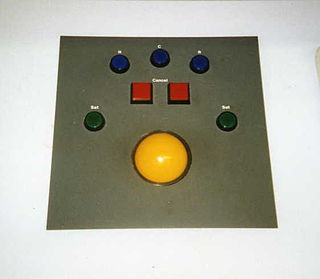
The Integrated Electronic Control Centre (IECC) was developed in the late 1980s by the British Rail Research Division for UK-based railway signalling centres, although variations exist around the world. It is the most widely deployed VDU based signalling control system in the UK, with over 50 workstations in control centres that manage many of the most complex and busy areas of the network.

Elliott Brothers (London) Ltd was an early computer company of the 1950s–60s in the United Kingdom. It traced its descent from a firm of instrument makers founded by William Elliott in London around 1804. The research laboratories were originally set up in 1946 at Borehamwood and the first Elliott 152 computer appeared in 1950.

Tod Machover, is a composer and an innovator in the application of technology in music. He is the son of Wilma Machover, a pianist and Carl Machover, a computer scientist.

The Digital Millennium Copyright Act (DMCA) is a 1998 United States copyright law that implements two 1996 treaties of the World Intellectual Property Organization (WIPO). It criminalizes production and dissemination of technology, devices, or services intended to circumvent measures that control access to copyrighted works. It also criminalizes the act of circumventing an access control, whether or not there is actual infringement of copyright itself. In addition, the DMCA heightens the penalties for copyright infringement on the Internet. Passed on October 12, 1998, by a unanimous vote in the United States Senate and signed into law by President Bill Clinton on October 28, 1998, the DMCA amended Title 17 of the United States Code to extend the reach of copyright, while limiting the liability of the providers of online services for copyright infringement by their users.
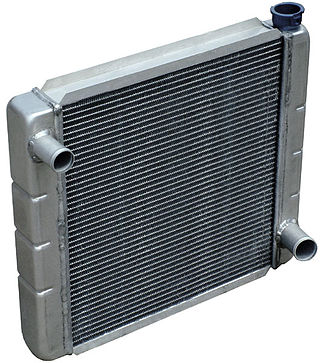
Radiators are heat exchangers used for cooling internal combustion engines, mainly in automobiles but also in piston-engined aircraft, railway locomotives, motorcycles, stationary generating plants or any similar use of such an engine.

GEC Computers Limited was a British computer manufacturing company under the GEC holding company from 1968 until the 1990s.
Marc-André Dalbavie is a French composer. He had his first music lessons at age 6. He attended the Conservatoire de Paris, where he studied composition with Marius Constant and orchestration with Pierre Boulez. In 1985 he joined the research department of IRCAM where he studied digital synthesis, computer assisted composition and spectral analysis. In the early 1990s he moved to Berlin. Currently he lives in the town of St. Cyprien and teaches orchestration at the Conservatoire de Paris.
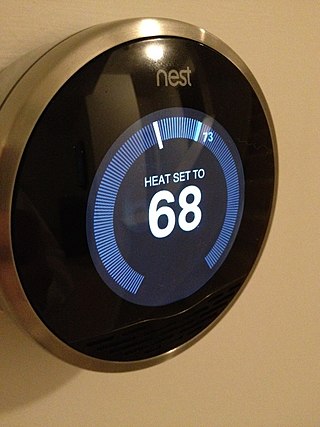
Smart thermostats are Wi-Fi thermostats that can be used with home automation and are responsible for controlling a home's heating, ventilation, and air conditioning. They perform similar functions as a Programmable thermostat as they allow the user to control the temperature of their home throughout the day using a schedule, but also contain additional features, such as sensors and Wi-Fi connectivity, that improve upon the issues with programming.
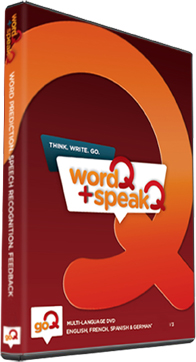
WordQ® is an assistive technology software developed by Quillsoft Ltd. and Holland Bloorview Kids Rehabilitation Hospital. WordQ's main purpose is helping individuals who struggle with reading and writing. Often that struggle is due to physical disability or neurodivergence such as Dyslexia or ADHD. WordQ uses intelligent word prediction to suggest words that the user is typing in as few as 1.3 keystrokes. This helps with spelling, and reduces the amount of physical movements a user has to make when typing. It also uses high-quality Acapela text-to-speech voices to read back text that the user has entered, allowing for proofreading and editing. WordQs speech recognition feature, SpeakQ®, is included in WordQ Desktop for Windows OS. It allows users to switch between speaking and typing while writing. WordQ Desktop is available for Windows and Mac OS, iWordQ is available for iPadOS, and WordQ Chrome for the Chrome browser is slated for release in January 2022.
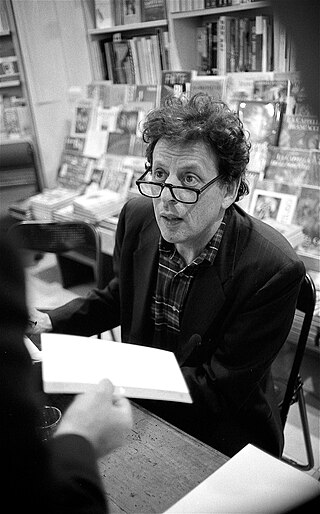
The Cello Concerto No. 1 was written by Philip Glass in 2001. It was one of the first concerti of the twenty-first century. The piece was commissioned by William and Rebecca Krueger, friends of both the cellist Julian Lloyd Webber and the conductor Yu Long in celebration of Lloyd Webber's 50th birthday and the first anniversary of Maestro Yu's China Philharmonic Orchestra. The work was premiered by Lloyd Webber with Long Yu conducting the China Philharmonic during the 2001 Beijing Music Festival, and attracted significant attention as the first time the work of a major western composer had its world premier in China. A typical performance takes about 30 minutes. The work is paired with the Concerto Fantasy for Two Timpanists and Orchestra as part of Glass' Concerto Project, a series of collected concerti by the composer. The cello concerto is among the most famous of Glass' works for a solo instrument.

Google Nest is a line of smart home products including smart speakers, smart displays, streaming devices, thermostats, smoke detectors, routers and security systems including smart doorbells, cameras and smart locks.

The Nest Thermostat is a smart thermostat developed by Google Nest and designed by Tony Fadell, Ben Filson, and Fred Bould. It is an electronic, programmable, and self-learning Wi-Fi-enabled thermostat that optimizes heating and cooling of homes and businesses to conserve energy.















